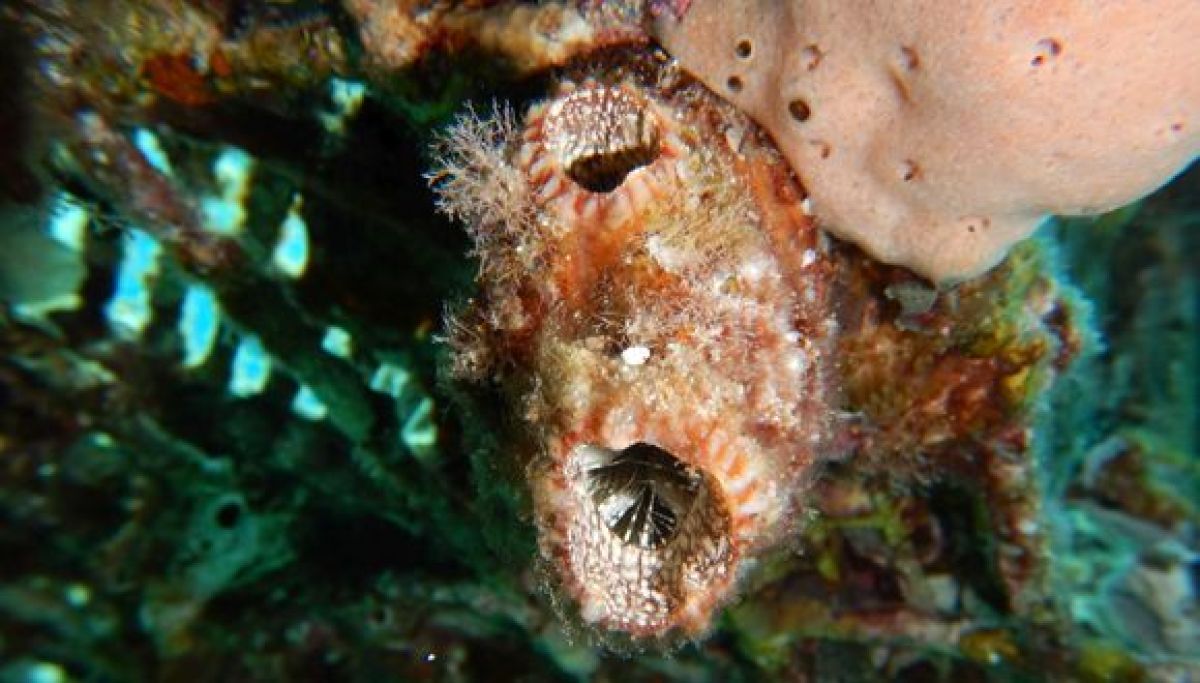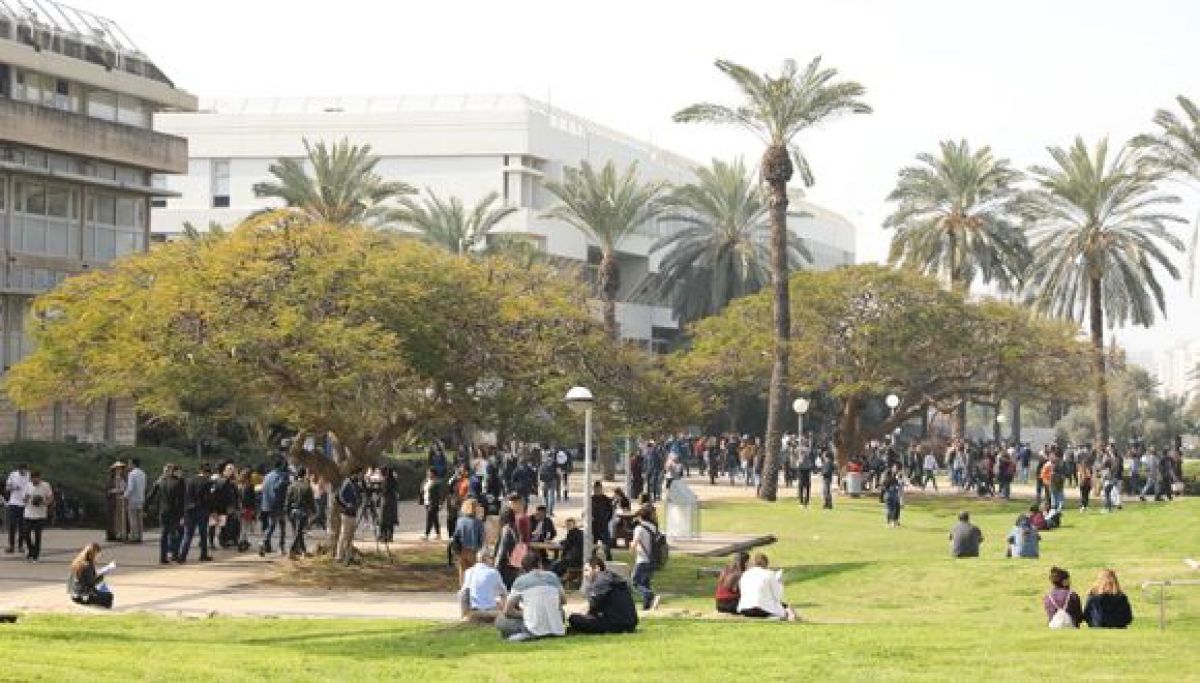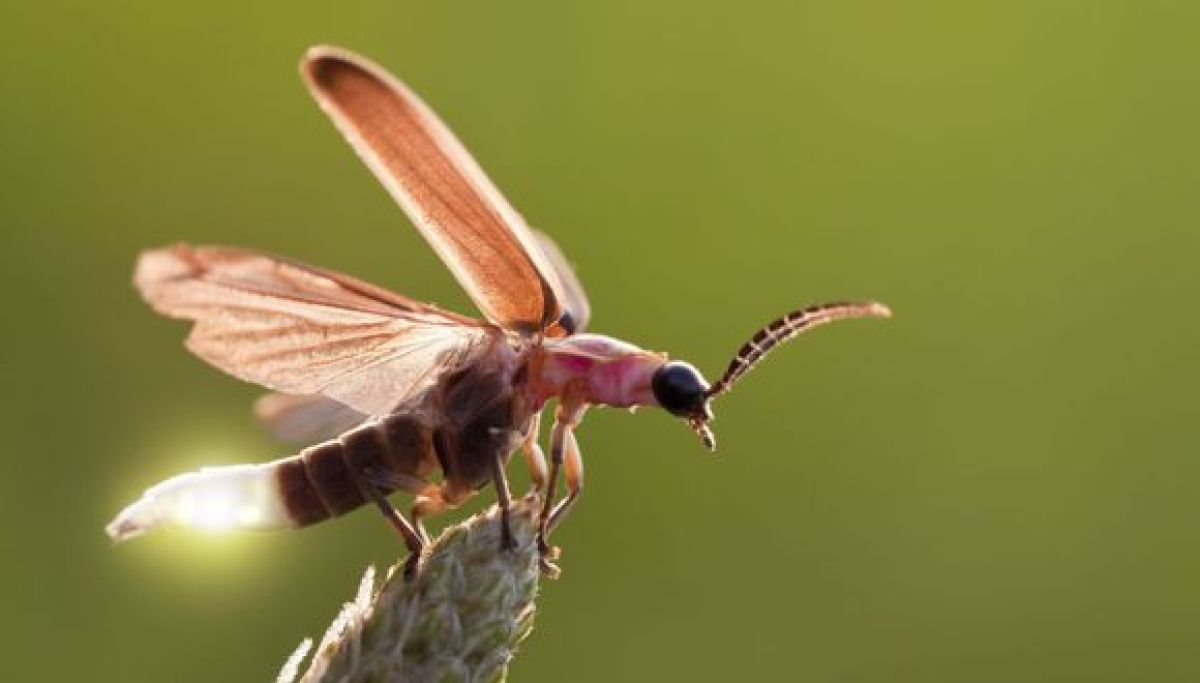Author: AUFTAU
Researchers from Tel Aviv University have discovered a species of ascidian, a marine animal commonly found in the Gulf of Eilat, is taking the concept of self-creation to a whole different level: it is capable of regenerating all of its organs fully – even if it is dissected into three fragments. The study was led by Prof. Noa Shenkar, Prof. Dorothee Huchon-Pupko, and Tal Gordon of Tel Aviv University’s School of Zoology at The George S. Wise Faculty of Life Sciences and The Steinhardt Museum of Natural History. The findings of this surprising discovery were published in the leading journal Frontiers in Cell and Developmental Biology.
Facebook And WhatsApp Are Changing The Sexual Abuse Attitude In Israel’s Hasidic Community
New study at Tel Aviv University reveals deep processes occurring in this sector over the past few years.
After years of silencing and concealment, covering up and repressing the issue, a new TAU study reveals that, over the past few years, more exposure to media and higher education has increased the awareness of the consequences of sexual abuse for its victims and the need for therapeutic intervention and prevention of future abuse. The study was conducted by Dr. Sara Zalcberg of TAU’s Religious Studies Program, Lester and Sally Entin Faculty of Humanities, and presented at the ‘Haredi Society in Israel’ conference of the Shandong University and Tel Aviv University Joint Institute for Israel and Judaism Studies.
Weakening The ‘Conspiracy of Silence’
Dr. Zalcberg: “The study’s findings indicate a trend of significant change in the Haredi society’s attitude toward sexual abuse. About a decade ago, many of the victims in this sector were not even aware of the fact that they had been sexually abused; Many parents didn’t know that sexual abuse of children even existed; And Haredi society as a whole was characterized by a three-way culture of silence – involving the victim, his/her family and the community and leadership. According to our study’s findings this ‘conspiracy of silence’ has gradually weakened in recent years, with evidence for a significant rise in both awareness and discourse regarding sexual abuse and its consequences.” The study comprised interviews with professionals working with the Haredi population, including in cases of sexual abuse, as well as activists involved in community safety, parents of children who had been sexually abused and a woman who had been sexually abused herself when she was a child. According to Dr. Zalcberg, the study has identified a gradual process, starting with the exposure of the Haredi sector to the job market, to education and to the virtual world, alongside the emergence of grassroots activism – from inside Haredi society. These have engendered a growing openness in discourse about sexuality, the body and intimacy, as well as an increase in the numbers of therapeutic and welfare professionals coming from the Haredi community – ultimately generating the first cracks in the high walls of reluctance to admit and address sexual abuse in Haredi society.“Once Exposed to the Internet, They are Exposed to Everything”
According to the study, the changes are manifested in several ways. First, a growing and unprecedented use of the online arena, including WhatsApp and Facebook, for discussing and addressing sexual abuse. One interviewee in the study noted: “The Haredi sector is exposed to the internet, and once exposed to the internet they are exposed to everything. Information is more accessible.” A social worker in a Haredi city added: “Haredi women in the therapeutic professions use the internet to disseminate information about sexual abuse, safety and therapy, and so the Haredi community learns about the issue.” The study also identifies change among families and parents of victims, manifested in the demand for prevention workshops that provide tools for recognizing and preventing sexual aggression. The supreme value of defending the community against any outside influence or criticism is being replaced by care for the welfare of families and children. This change has also led to a conceptual shift in a large portion of the Haredi leadership, who now recognize the abuse and its victims and promote the connection with welfare authorities. Dr. Zalcberg emphasizes that the change can even be discerned in the more insular and conservative groups within Haredi society. As Chezi, a Haredi social worker working with the Haredi population in one of the social services, commented: “We see more openness even in the conservative community. Hassidic communities that usually don’t turn to us (to the social services), now come when there’s a case of sexual abuse. They understand that this is a serious matter.” At the same time, as the study points out, despite the significant processes taking place in Haredi society, there are still considerable gaps in both awareness and addressing the phenomenon and its consequences. Dr. Zalcberg: “Despite the change taking place in Haredi society with regard to discussing and addressing sexual abuse, a great deal more still needs to be changed. Both discourse and awareness should be enhanced, preventive measures must be advanced, and the rates of reporting abuse and asking for professional intervention should be increased. There is urgent need for mapping families and communities who don’t have sufficient access to information and services, and for promoting specifically tailored responses.”“Stay Close to Them, but Avoid Clinging to Them”
TAU professor and early childhood expert on how to help children feel secure in times of unrest.
During difficult and stressful times, children are particularly reliant on adult presence and support. They need our help to make sense of everything, and to restore their sense of security. In light of the current unrest here in Israel, we asked Prof. Dorit Aram, from TAU’s The Jaime and Joan Constantiner School of Education and whose area of expertise is adult-child interactions and their implications for early development, what we can do to be there for our children in the best way possible during these testing times. She had several practical tips to share with us all:How do we explain the current crisis to our children?
Prof. Aram: “With children that are younger than 3 years old, there’s no need to explain the overall security situation. It is better to focus on what is going on right here, in the moment. With children aged 3-5, you can start to explain that we are engaged in a fight with a country called Gaza. That’s enough. If your child asks why, you can say that we and the Gazans do not agree on where the boarders of our countries should be. They would like to get more of our country and we do not want that to happen. It is like when you want something from your friend and she doesn’t want to give it to you. So you argue.” “For children aged 5-7, you can add in some historical context and explain that there’s a conflict going on between two peoples about territory. Both those peoples want the same thing, and they need to reach a conclusion, but right now they are stuck and they deal by shooting at each other. For the Hebrew readers among you, there’s a book called “אוזו ומוזו מכפר קאקארוזו” which can be read for the child, but really any good children’s book on conflict between neighbors can be read for the child.” “In my experience, many parents shy away from talking about the political conflict with their children, but with children from age 5 it is actually good idea to discuss the topic. Because the children observe what’s going on, they are aware. Getting answers can ease their minds. If their parents won’t discuss it, the children will fill the gap with fear and erroneous ideas based on things they overhear. Just be careful not to monsterfy the other side. And do not let them watch the scary news on TV.”What do we tell our children when they ask why they cannot be in kindergarten during the days?
“Explain that there may be missiles, and that right now the kindergarten teachers are not prepared or able to bring all the children to the shelter. So the children need to stay home for now. But let them know that you hope that it will end soon, so they can return to kindergarten and their friends. Tell them the truth! It is also very important to reassure them that we have the defense forces to protect us. And to remind them that when they are in the shelter, they are safe. And we, the parents, are here for them.”How do we explain the sirens?
“You can tell children above 3 that, just like there’s Fireman Sam, we also have the defense forces to protect us. And there’s the Iron Dome. Explain to them that the sirens let us know that a missile has now left Gaza and is headed our way, so we need to quickly go to the shelter. The Iron Dome is there to stop the missiles, but we still make sure to go to the shelters where we are completely safe. “How do we calm our children down if they are anxious?
“Parents as partners need to agree on the logistics of things and stay united and calm in front of the children. Stay close to them, but avoid clinging to them. You need to be calming them down and not the other way around. But be nice to yourself and conscious of your own needs. Speak with other adults if you are feeling anxious and need to talk. These are difficult times for everyone, so make sure that you take care of yourself. Hug your children and spend time with them. Think of things to do that tend to make them calmer – you can read to them, distract them somehow, practice some breathing techniques together (just counting breaths can be powerful), tickle them a bit or crack some jokes (laughter is very soothing), and make the shelter a nice place to hang out in – keep their favorite toys, dolls or teddy bears there. Give them responsibilities, tasks they can take care of, and let them feel in control. Try to maintain your routines as a family, to the extent possible.”Any questions we should ask our children?
“Some parents hear other parents speak of their children’s questions, and worry because their own children don’t ask questions and that maybe something could be wrong. That’s not a reason to ask, and you should rest assured that your child might, in fact, feel fine. No need to panic.”How will this situation affect our children in the long run?
“If this situation lasts for only a few days and the parents, meanwhile, manage to ensure that their children have routines in place, then it should be fine. However, we do not know what will be. So, I would say that it depends on the children and their sensitivity and the actions of the parents.”Standing With The Tel Aviv University Community
Message from the President of Tel Aviv University, Prof. Ariel Porat –
Dear Tel Aviv University Community,
These are difficult times for all of us, Jews and Arabs alike. The riots in Israel – in Jerusalem, Lod, Acco, and numerous other locations – are terrifying, alongside the incidents of warfare, and indicative of an unprecedented crisis in relations between Jews and Arabs in the State of Israel, while the outcome remains to be seen.
Tel Aviv University has always been proud of being pluralist and liberal. There is no more important foundation to the liberal character of the University than the tolerance to which we are all committed, towards every individual, regardless of religion, nationality, ethnic affiliation, or opinion. This pluralism is not merely passive, but active: The University will act in every way possible in order that all members of the campus community will feel safe, and will enjoy the freedom to express their opinions without fear or concern.
A society, not infrequently, is tested in times of crisis. Let us, the University community, offer an example to Israeli society of fitting ways to discuss, and to dissent, one from the opinion of another, in an atmosphere of tolerance and camaraderie, pleasantly and in the ways of peace.
Please, take care of yourselves, your friends and your associates.
Sincerely yours,
Prof. Ariel Porat
President, Tel Aviv University
Our Planet in the Hands of Academia
TAU to launch a multidisciplinary research center on climate change with the aim of finding practical solutions to the global crisis.
Tel Aviv University will soon launch the multidisciplinary Center for Climate Change Action, with the aim of finding practical solutions to the global crisis. The new center, the first of its kind in Israel, will operate in the framework of the Porter School of the Environment and Earth Sciences, and will cover the subject from all angles, utilizing the knowledge, resources and capabilities of all faculties on campus (engineering, medicine, the exact sciences, life sciences and earth sciences, law, the social sciences, humanities, and the arts). The center will collaborate with representatives from industry, academia and government, in Israel and around the world, in an effort to develop technological solutions, raise public awareness, promote legislation and regulations, and more.
Furthermore, the center will support the development of new and existing projects, award scholarships to students, develop a fellowship program, fund mentorships and advanced training programs, and launch an accelerator in collaboration with industry representatives. In addition, the center will publish annual position papers and organize international conferences.
“The time has come to find solutions”
Prof. Ariel Porat, President of Tel Aviv University: “Tel Aviv University is a partner in the need for all humankind to deal with the dangers of global warming and climate change. Confronting this challenge requires a view from many perspectives: technological, social, moral, economic, sociological, legal and more. The huge variety of disciplines at Tel Aviv University allows for such a broad view. This new multidisciplinary center that will deal with climate change joins the several multidisciplinary centers we have established in the last two years at the university, including the Center for Artificial Intelligence and Data Science, the Center for Combating Pandemics, and the Center for Quantum Science and Technology.” The center will be headed by Prof. Colin Price, Head of the university’s Department of Environmental Studies, who explains that “Basic research is important, but since we already know that there is a problem with global warming, and we know what causes the problem, the time has come to find solutions, from every perspective and every discipline. There are technological solutions that will come from engineering and the exact sciences, but there are also solutions that will come from regulation, public policy, and even psychology. After all, you don’t need modern technology to mobilize public support for action, and without this support, technological solutions will not be implemented. The Center for Climate Change Action will be a cross-campus collaboration, with partners in high-tech, industry, government and civil society.” According to Prof. Price, the main goal of the research center, and of humanity in general, is to first and foremost address the source of the problem, namely the greenhouse gases that humans emit into the atmosphere, and to meet the target of net zero greenhouse gas emissions by 2050, as defined by the UN. “We have a total of 30 years to find solutions and reach a global balance, and there are still a lot of problems to solve,” adds Prof. Price. ”A good example of this is solar energy. It’s cheaper to generate electricity from solar energy today than from a power plant that uses fuel, coal or even natural gas, but the solar energy must be transported to people’s homes, the electricity generated must be stored at night, that is, in batteries, and you need infrastructure to carry the energy to population centers. We need to invest in finding practical solutions today, in order to avoid the gloomy forecasts of tomorrow.” Prof. Colin Price: “We have a total of 30 years to find solutions and reach a global balance, and there are still a lot of problems to solve.”Fireflies’ Protective ‘Musical Armor’ Against Bats
Trailblazing TAU study reveals that fireflies produce strong ultrasonic sounds that may potentially work to deter bats.
They sure know how to put on a show at nights – fireflies are striking with their glow-in-the-dark feature. But have you ever stopped and wondered how these glowing insects defend themselves against predators? A trailblazing TAU study reveals that fireflies produce strong ultrasonic sounds that may potentially work to deter bats, serving as a ‘musical armor’ against these predators. The discovery of such a ‘musical battle’ between fireflies and bats may pave the way for further research, and the discovery of a new defense mechanism developed by animals against their predators. According to the study, the fireflies produce strong ultrasonic sounds – soundwaves that the human ear, and more importantly the fireflies themselves, cannot detect. The researchers hypothesize that these sounds are, in fact, meant for the ears of the bats, keeping them away from the poisonous fireflies, and thereby serving as a kind of ‘musical armor’. The study was led by Prof. Yossi Yovel, Head of the Sagol School of Neuroscience, and a member of the School of Mechanical Engineering and the School of Zoology at the George S. Wise Faculty of Life Sciences. It was conducted in collaboration with the Vietnam Academy of Science and Technology (VAST) and has been published in iScience. Fireflies are known for their unique, all-year glow, which is effective as a mating signal. Their bodies contain poison, and so the light flashes probably also serve as an aposematic signal, a warning to potential predators. At the same time, this signal is also the firefly’s weakness, as it makes it an easy target for predators. Bats are among the fireflies’ most prevalent potential predators, and some bats have poor vision, rendering the flashing signal ineffective. This prompted the researchers to check whether fireflies were equipped with an additional layer of protection against bats.Accidental Discovery of ‘Musical Battle’
The idea for this study came up accidentally, during a study that tracked bats’ echolocation. Ksenia Krivoruchku, the PhD student who led the study recalls, “We were wandering around a tropical forest with microphones capable of recording bats’ high frequencies, when suddenly, we detected unfamiliar sounds at similar frequencies, coming from fireflies. “In-depth research, using high-speed video, revealed that the fireflies produce the sound by moving their wings, and that the fireflies themselves are incapable of hearing this frequency. Consequently, we hypothesized that the sound is not intended for internal communication within the species.” Following this discovery, the team at Prof. Yovel’s laboratory examined three different species of fireflies that are common in Vietnam (Curtos, Luciola and Sclerotia), in addition to one Israeli species (Lampyroidea). It was found that they all produce these unique ultrasonic sounds, and that they are all unable hear them. Prof. Yovel says that it is premature to conclude that fireflies have developed a special defense mechanism specifically targeting bats, there are indications that this may be the case. The fact that the fireflies themselves are unable to hear the sound, while bats can both hear it and use it to detect the fireflies, makes it more likely that these ultrasonic sounds serve as a warning signal. The discovery of ultrasonic sounds in fireflies is in itself an important contribution to the study of predator-prey relations. The idea of warning signals that the sender itself cannot detect is known from the world of plants, but is quite rare among animals. Krivoruochku says “Our discovery of the ‘musical battle’ between fireflies and bats may pave the way for further research, and possibly the discovery of a new defense mechanism developed by animals against potential predators.”Show Me Your Playlist And I’ll Tell You Who You Are
Could you be inadvertently channeling your inner Beyonce or Eminem?
A new study shows that three songs from a playlist are enough to identify the person who chose the songs. Hence, companies like YouTube and Spotify can accumulate a great deal of information about their users based only on their musical preferences. The study was led by Dr. Ori Leshman of The Jaime and Joan Constantiner School of Education at Tel Aviv University and Dr. Ron Hirschprung of the Department of Management and Industrial Engineering at Ariel University. The study was published in the journal Telematics and Informatics.
The study included about 150 young people (all undergraduate students), in 4 groups of about 35 people each. Participants were asked to identify group members based on only three songs from their favorite playlist. The variety of the students’ musical preferences was wide and very diverse, including, for example, both old and new Israeli music (from Sasha Argov to Kaveret, Zohar Argov, Omer Adam and Hanan Ben Ari), classic rock and pop (from the Beatles and Pink Floyd to Beyonce and Ariana Grande), Israeli and international hip hop (from Kendrick Lamar and Eminem to Hadag Nahash and Tuna) and more. The song choices were then analyzed according to a mathematical model developed by the scholars.
The findings surprised even the researchers. The analysis of the data showed that the group members were able to identify the study participants according to their musical taste at a very high level of between 80-100%, even though the group members did not know each other well and had no prior knowledge of each other’s musical preferences.
Dr. Leshman and Dr. Hirschprung explain: “Music can become a form of characterization, and even an identifier. It provides commercial companies like Google and Spotify with additional and more in-depth information about us as users of these platforms. In the digital world we live in today, these findings have far-reaching implications on privacy violations, especially since information about people can be inferred from a completely unexpected source, which is therefore lacking in protection against such violations. Visiting YouTube is perceived by the ordinary person as an innocuous act, but this study shows that it can reveal a lot about that person. On the other hand, this knowledge can be used as a bridge between people and perhaps in the future lead to the creation of new diagnostic methods and fascinating intervention programs that will make use of people’s favorite music.”
Promoting Equality on Campus
Tel Aviv University has announced the formation of a new unit – the Equality and Diversity Commission – to be led by Prof. Neta Ziv from The Buchmann Faculty of Law. The new Commission, which will report directly to the University President, will deal with all aspects of equality and diversity on campus, including gender, Arabs, first-generation university students, people with disabilities, the LGBT community, members of the Ethiopian community, and the ultra-Orthodox. The Commission will act to promote equality and diversity in the faculty, the administration, and the student body. Prof. Ziv will start her new role in July 2021.
Striving for a Diverse & Equal Campus
Tel Aviv University has thus adopted in practice the recommendations of the Diversity Committee appointed by Prof. Ariel Porat, President of TAU, to examine the issue. The Committee, headed by Prof. Sigal Alon, recommended, inter alia, that the new unit outline a comprehensive university policy, set goals, and help senior TAU office holders promote equality and diversity in the areas under their responsibility. The Committee report states: “To solve complex social problems, discover the next scientific breakthrough, and reach new heights of artistic expression, we must allow diverse ideas, approaches, perspectives, and experiences. Such diversity stimulates new research POVs, analytical methods, discoveries, and solutions.” Similarly, campus diversity creates opportunities for interactions among students and faculty members coming from different backgrounds and expands tolerance towards a broad range of perspectives. A diverse campus is itself an edifying model as it prepares students for better citizenship and leadership in a democracy striving for an ideal society free of racism, fear of the other, and stereotyping. TAU President Prof. Ariel Porat: “To strive for equality and diversity on the campus is not only a social objective of the highest importance. A diverse academic faculty ensures a higher academic level for the university and its units; a diverse student body makes the experience of studying at the campus more meaningful; and a diverse administration provides the campus community with the sense that the university belongs to everyone regardless of gender, ethnicity, or nationality. I’m proud that Prof. Neta Ziv responded favorably to my request to assume the position of establishing the new Commission. Anyone who knows Neta knows that she is both a fully ethical individual and someone who gets things done, a rare combination of traits. For many years, she headed the Law Faculty’s legal clinics and made them a source of pride for the Faculty and University as a whole, nationally and internationally.” Prof. Neta Ziv notes that the Commission she will lead will operate jointly with existing units to expand programs that have been implemented in recent years, particularly for first-generation university students and students with disabilities, the integration of Arabs and other groups in the administrative staff, and increasing the number of women and Arabs on the academic faculty at all levels. Prof. Ziv: “I’m greatly honored to have been asked to head the formation of the new unit and work on issues I have studied, taught, and been active in for more than thirty years. I believe that a diverse, equal campus is critical for achieving the academic excellence we strive for. But this is also an ethical matter. As a body that relies on public and community resources, the University is obligated to reflect the diversity of the Israeli public at large and become a sphere where every group enjoys a sense of belonging in an equal and respectful manner.”Google and TAU to Harness the Power of AI for Social Good
Google and Tel Aviv University recently launched a three-year program for promoting AI-related multidisciplinary research for the benefit of society. The program aims to support research and collaborations in Data Science and Artificial Intelligence, that can advance humanity by addressing focal social issues on the global agenda. It was launched within the framework of TAD, the TAU Center for Artificial Intelligence and Data Science, established in February and headed by Prof. Meir Feder of The Iby and Aladar Fleischman Faculty of Engineering.
The program was launched at a recent ceremony at TAU, announcing 10 winners – out of 27 proposals submitted in response to TAU and Google’s joint call. Seven of the winning projects are supported by Google. The grant winners, whose projects address different aspects of AI for Social Good, include researchers from a wide range of disciplines: Zoology (Faculty of Life Sciences), Electrical Engineering, Economics, Statistics, Communication Disorders, Biblical Studies, Earth Sciences and Computer Science, Sociology and Anthropology and more.
 Prof. Yossi Matias, Prof. Ariel Porat, Prof. Meir Feder & Prof. Tova Milo580.jpg) Left to right: Prof. Yossi Matias, Prof. Ariel Porat, Prof. Meir Feder & Prof. Tova Milo
The joint venture will include a joint seminar on Machine Learning (ML), led by TAD Director Dr. Shimon (Moni) Shahar and Dr. Deborah Cohen, a scientist at the new Google Center in Israel.
Prof. Meir Feder emphasized that “the AI revolution is expected to impact every aspect of our lives, from drug development and data-based personalized medicine, to defense systems, financial systems, scientific discoveries, robotics, autonomous systems and social issues. In addition, it is very important to train human capital in this area, and therefore the Center will provide every student at TAU with a basic AI education. TAU is special in having researchers who specialize in basic science and AI, as well as researchers who apply AI in the humanities and social sciences. We are happy that Google has decided to join forces with TAU in this important matter. The collaboration with Google will enable utilization of the power of AI and Data Science, channeling it toward the benefit of society.”
Left to right: Prof. Yossi Matias, Prof. Ariel Porat, Prof. Meir Feder & Prof. Tova Milo
The joint venture will include a joint seminar on Machine Learning (ML), led by TAD Director Dr. Shimon (Moni) Shahar and Dr. Deborah Cohen, a scientist at the new Google Center in Israel.
Prof. Meir Feder emphasized that “the AI revolution is expected to impact every aspect of our lives, from drug development and data-based personalized medicine, to defense systems, financial systems, scientific discoveries, robotics, autonomous systems and social issues. In addition, it is very important to train human capital in this area, and therefore the Center will provide every student at TAU with a basic AI education. TAU is special in having researchers who specialize in basic science and AI, as well as researchers who apply AI in the humanities and social sciences. We are happy that Google has decided to join forces with TAU in this important matter. The collaboration with Google will enable utilization of the power of AI and Data Science, channeling it toward the benefit of society.”
Bridging Disciplines to Make Good Things Happen
TAU President Prof. Ariel Porat, who aims to establish ‘bridges’ between the different disciplines studied at TAU, said at the ceremony: “I share a common vision with Prof. Yossi Matias. We believe that AI researchers can benefit significantly from collaborations with researchers in the social sciences and humanities, just as the latter benefit from new developments in AI. I am very happy about our partnership with Google. I look forward to seeing its fruits and hope to expand it further in the future.” Prof. Yossi Matias, VP at Google and Managing Director of Google Center in Israel, spoke of AI technologies and how they are already improving our lives dramatically: “AI already has great impact in various areas. We are delighted for this opportunity to harness the power of AI for social good and for science. Google is especially happy about its work on beneficial and even lifesaving products, such as the worldwide project for accurate flood forecasting, a technology enabling the hearing-impaired to conduct phone conversations, and studies on the use of AI to enhance disease diagnosis.” Prof. Matias thanked Prof. Porat, Prof. Meir Feder, Head of the TAD Center, and all other partners in the initiative. He spoke of the special opportunity to generate collaborations between researchers, and noted that he is a great believer in connections between different disciplines. “There are some deep and fascinating research questions associated with AI in many different disciplines, creating substantial opportunities for collaboration. Good things happen when different ideas and different approaches come together.” Prof. Yossi Matias, Prof. Ariel Porat, Prof. Meir Feder & Prof. Tova Milo580.jpg) Left to right: Prof. Yossi Matias, Prof. Ariel Porat, Prof. Meir Feder & Prof. Tova Milo
The joint venture will include a joint seminar on Machine Learning (ML), led by TAD Director Dr. Shimon (Moni) Shahar and Dr. Deborah Cohen, a scientist at the new Google Center in Israel.
Prof. Meir Feder emphasized that “the AI revolution is expected to impact every aspect of our lives, from drug development and data-based personalized medicine, to defense systems, financial systems, scientific discoveries, robotics, autonomous systems and social issues. In addition, it is very important to train human capital in this area, and therefore the Center will provide every student at TAU with a basic AI education. TAU is special in having researchers who specialize in basic science and AI, as well as researchers who apply AI in the humanities and social sciences. We are happy that Google has decided to join forces with TAU in this important matter. The collaboration with Google will enable utilization of the power of AI and Data Science, channeling it toward the benefit of society.”
Left to right: Prof. Yossi Matias, Prof. Ariel Porat, Prof. Meir Feder & Prof. Tova Milo
The joint venture will include a joint seminar on Machine Learning (ML), led by TAD Director Dr. Shimon (Moni) Shahar and Dr. Deborah Cohen, a scientist at the new Google Center in Israel.
Prof. Meir Feder emphasized that “the AI revolution is expected to impact every aspect of our lives, from drug development and data-based personalized medicine, to defense systems, financial systems, scientific discoveries, robotics, autonomous systems and social issues. In addition, it is very important to train human capital in this area, and therefore the Center will provide every student at TAU with a basic AI education. TAU is special in having researchers who specialize in basic science and AI, as well as researchers who apply AI in the humanities and social sciences. We are happy that Google has decided to join forces with TAU in this important matter. The collaboration with Google will enable utilization of the power of AI and Data Science, channeling it toward the benefit of society.”










